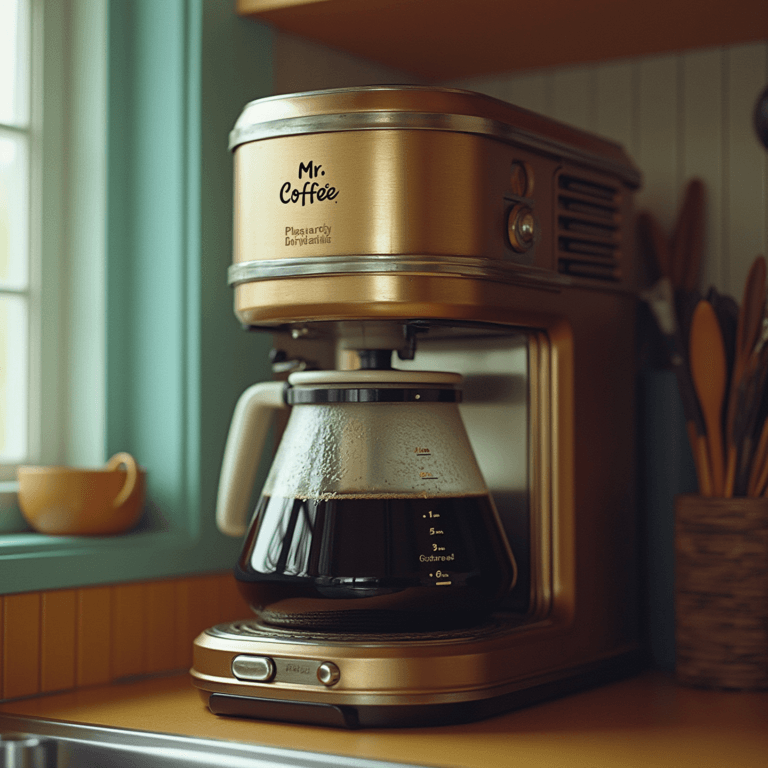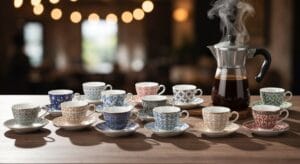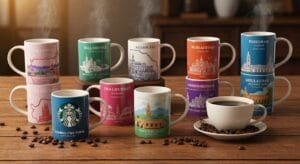Imagining a kitchen with its walls pierced by openings of avocado green and harvest gold. The air reeks of the coarse aroma of freshly ground coffee thick as gristle with cinnamon rolls baking in the oven. Chrome espresso machines, red of Mr. Coffee brewer on a countertop; sunlight trickling window. This was the 1970s – who would have ever thought that coffee machines would step out of their functional lives to become archetypes of a society on the move. Come along with us on a journey back to that transitional era, when even the slightest whistle of steam and clang of a filter holder meant not simply caffeine but a revolution in design, tech & our means of coffee connecting.
Chapter 1: The Machines That Defined Coffee
The gothic of coffee machines not even venturing so far as repairs to existing ones, but total reimaginings into something new. A dramatic change from cumbersome steam- powered systems that had characterized coffee-producing technology for most of the last century to something much simpler, more streamlined and pump-driven. This trajectory was accomplished by breakthroughs that fundamentally transformed the art of coffee brewing .
Steam to Streamlined
Prior to the 1970s, espresso machines were steam reliant with notoriously inconsistent extraction countering a not so amazing taste. The rise of *pump-driven technology* represented a giant leap. The *Faema E61* led this charge — an Italian machine often heralded for its scalable, future-proof design.
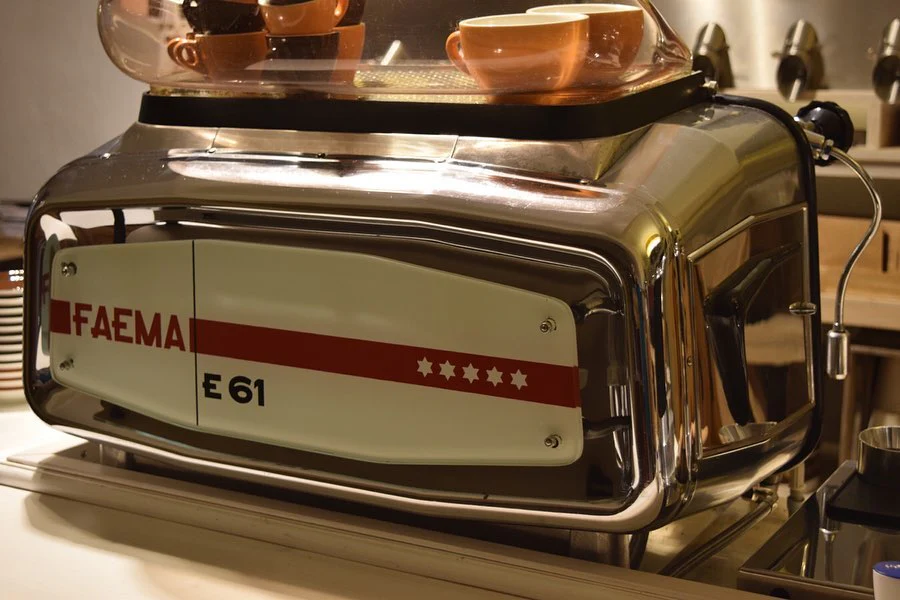
Faema E61 used electric pump to supply a stable 9 bar pressure, this was a critical component in extracting the perfect espresso. This innovation assured a richer, much more complex crema and a more smooth, elegant shot of espresso . As one barista from Milan promised fondly “The E61 wasn’t just a machine— it was the conductor for every note in extraction.” To put it simply, this was a game-changer in the industry and has single-handedly defined what an espresso should be. .
Following in the footsteps of the Faema E61, the La Marzocco GS became another pioneering star. For instance, the GS—first a dual-boiler espresso machine with simultaneous brewing and frothing of milk before that unique design made possible with 2 boilers became standard issue barista — was also the first dual-boiler espresso machine.

It resulted in a significantly propelled approach to prepare coffee, making cafés the focal focus of busy routines and social encounters.
Much of these revolutionary changes started due to the chaps who created a blueprint for the modern espresso machine. Anoint, if you will, by 1884 when Angelo Moriondo was granted a patent for his “new steam machinery for the speedy manufacture of coffee”, and Luig Bezzera patented the first commercial espresso machine, the Tipo Gigante at the turn of the 20th century; they were responsible for mobilizing the necessary technological advancements of the 1970s.
Their contribution has created an enormous base of coffee culture we know today. ?
Mr. Coffee and the Drip Army
Parallel to this, happening somewhere in Europe right about now, a different revolution was about to sweep the American kitchen. (1972: debut of the Mr. Coffee® drip brewer … forever changing how everyday coffee lives.
The user-friendly plastic housing and automatic drip system of the Mr. Coffee provided a drastic change from all the old & typically monolithic percolators that once ruled domestic territory. It was this simplicity that made “gourmet” coffee accessible to even the scrappiest families, as it had prior to. . And Mr. Coffee’s impact was magnified even further by a clever marketing campaign in which they paired Joe DiMaggio (MLB legend to head smoke) around the tagline of “It’s not just coffee — it’s Mr. Café.* It chimed with American consumers deeply as they understood the pinstriped, charismatic charm to DiMaggio” *I am not even kidding it* We bought Mr. by 1975 and smoke, drip coffee became the quintessential morning routine
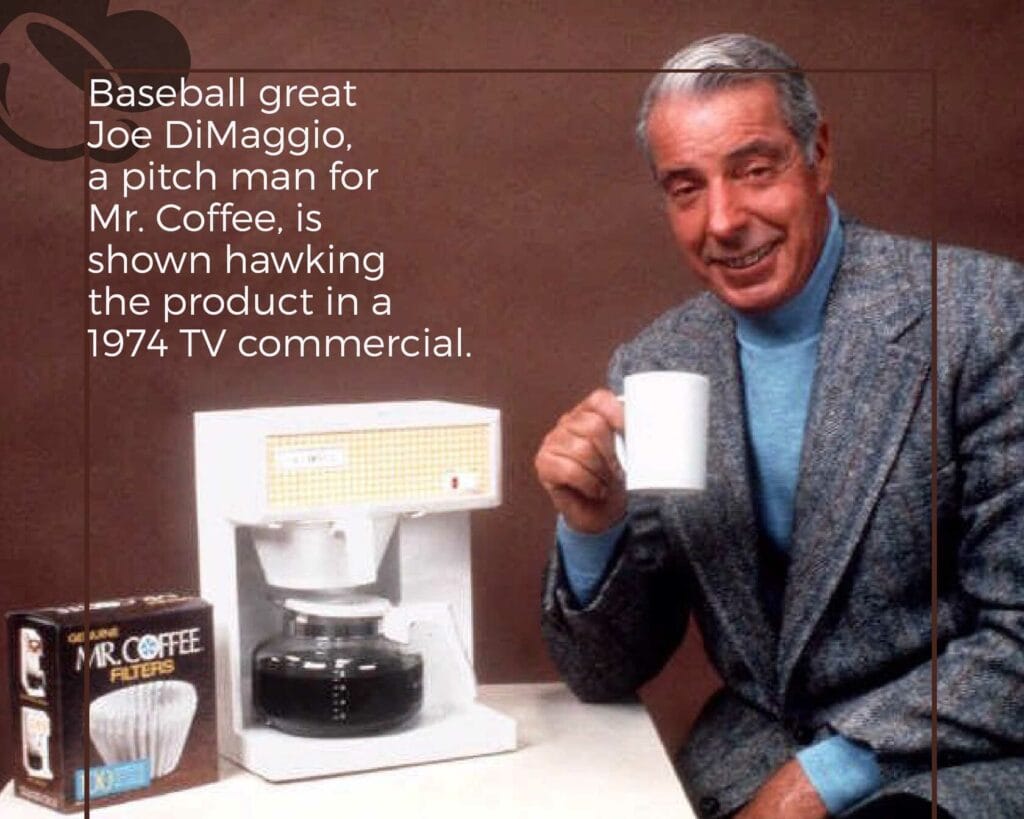
Design: Bold, Bright & Unashamedly Retro
The trend of 1970s design: bold, fiery and totally retro. There were no exceptions among coffee machines of the time, reflecting the stock-change in design trend towards expressive and downright unconventional.
Across the board, espresso machines traded practical boxy steel boxes for flowing chrome chrome in sleek silhouettes that suggested nothing so much as style factor. Meanwhile, drip brewers took a more comic and colourful line-as they sported finishes in burnt orange and harvest gold as well as the enduring “red coffee machine”, an icon of domestic success in the kitchen .
“A design historian who shall remain nameless has pointed out ‘These weren’t just appliances they were statements…* they matched the shag carpets and disco balls’. This speaks volumes to the 70s design ethos, where everything was elevated to some level of art due to it’s audaciousness and impossibility at that time.
Chapter 2: The Coffee Geeks Silent Revolution
Cultural and social transformation were ignited when the coffee machines of 70s added technological and design innovations. Coffee was no longer a beverage; it be came not just the occasion something everyone needed to drink but the gat-way to connecting, a symbol of status and source for altering dialogue
Kitch Club
The adoption of user-friendly coffee machines like Mr. Coffee has turned the kitchen into a hub for social connection. Where traditional Tupperware parties were more often now be replaced by “coffee circles,” the hostess ran a Mr. Caffee to madness pressing a workstation that churned out endless cups and guests discussing everything under the sun from the resignation of Nixon to disco…………….”Caffeine teardown… ” comments a Seattle homemaker!
“Yeah for sisterhood but you know with caffeine”, laughs a homemaker in Seattle, and illustrates the bonding and community he was creating with these gatherings.
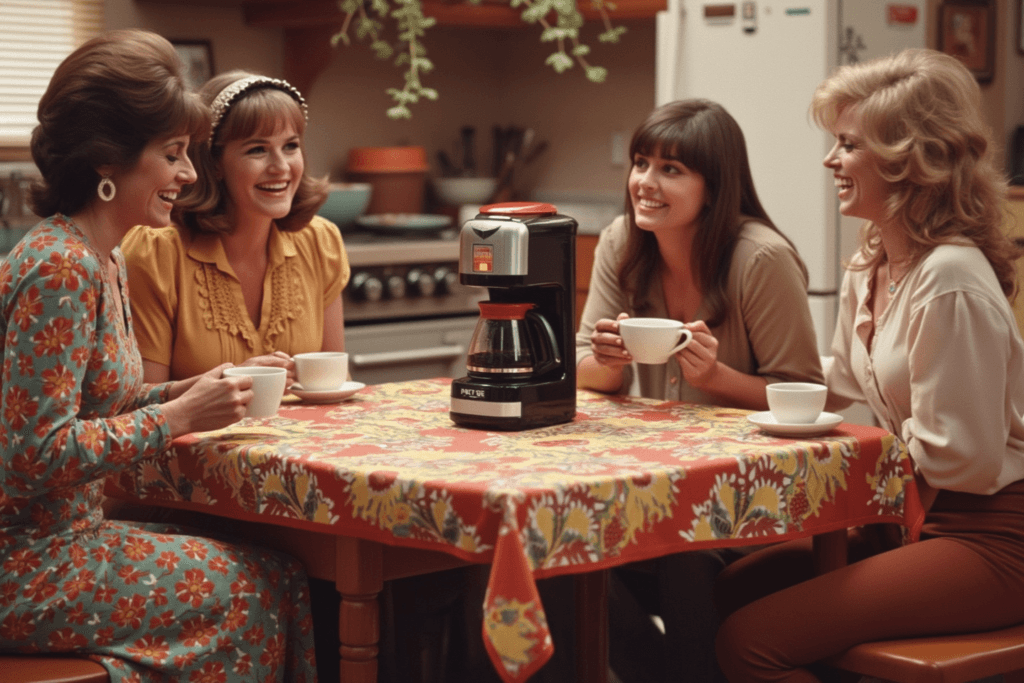
In Italian bars, espresso became the status symbol of refinement. “The order of an espresso was not just a drink, but a performance,” one Roman café owner mused about the social ritual surrounding espresso —the theatrical aspect of it.
Espresso Bars: Place Where Counterculture Met Caffeine
Espresso bars popped up in the dingy corners of cities like San Francisco and New York as textured homes for counter-culture practices. Students, artists and activists hung ten feet around La Marzocco grinders drinking lattes maintaining conversation ranging from the latest revolutionary headache to making plans for protests or passing around poems one had just written.
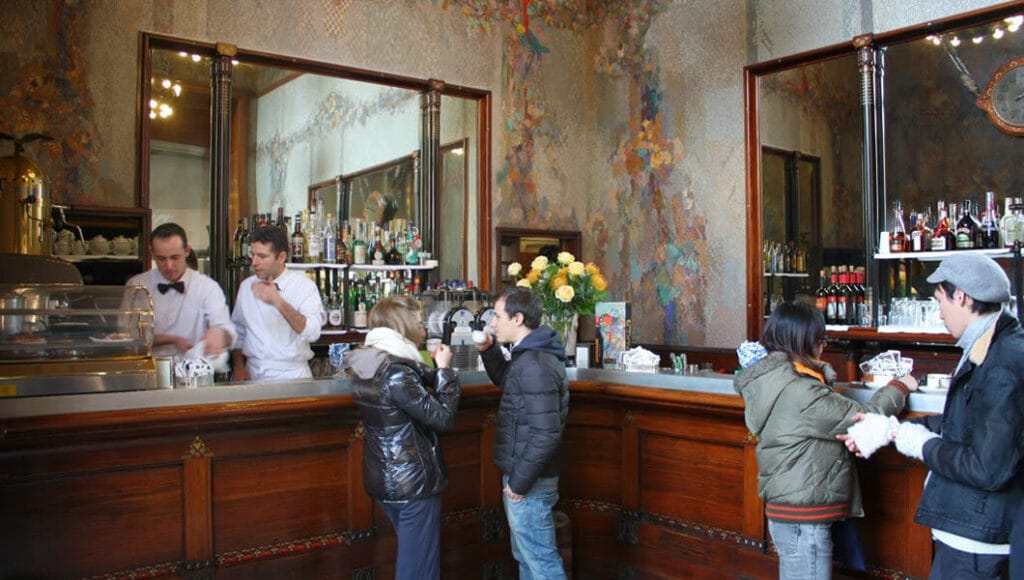
Over the top they are spaces that so echoed beatian coffeehouse of the 50s. But with a 1970s tang in them. The espresso bars of these espresso bars provided haven from society’s pressures for LGBT communities and not too say that feminist groups had action taking the necessary to great these safe-spaces for activism and social change. While those are fine words, “the espresso machine was our rebellion,” a former barista Irene from Greenwich Village shuddered.
The Coming Coffee Crisis And Consumer Shifts
There weren’t many cookies in the 70s. Periodically fumbling with itself one global coffee shortage erupted in 1975 as a result Brazilian frost caused political feuding among several African nations leading to numerous coffee-producing states to become unstable and drive prices for the bean up dramatically. And major companies like Maxwell House responded by only raising their costs, and the consumers turned to less expensive substitutes such as instant coffee;. But that chaos also created a bright side: the whole specialty coffee movement. Cheaper, smaller roasters and independents began sourcing beans directly from farms using better taste-testing, origins knowledge… and sometimes just because it’s fair-trade ethical sourcing; sustainability…. Only in outline was this the birth of craft coffee — its template echoing the third wave ethos that underpins today’s high end coffee show that seeks transparency, sustainability and understated craftsmanship.
Chapter 3: The 1970s Coffee Machine Legacy
The coffee machines of the 1970s forever changed the coffee culture and our thinking on quality, sustainability and community… now.
Why Retro Still Appeals
In 2019 vintage 1970s coffee machines are considered collector items and high-coloured by all, un-refinished Durais (with their signature flip top or built in carafe) a rare sight in Europe. At the top of Faema E61 is a diamond indeed, and TikTok tutorials that demonstrate how to “dial in your 70s burr grinder” are viewed millions of times over, proof positive of an eternal attraction to these iconic machines.
There’s magic in the manual process*, says the owner of a Brooklyn coffee shop, which proudly employs a 1974 La Marzocco in his café. “You taste the history of every shot. You can feel the heart of vintage coffee machines rumble on — important to keep in mind when enjoying your coffee but also a reminder of appreciation for traditional brewing and the craft of making something by hand. »
Lessons that THE NEW STANDARD can take for coffee tech
We must look backward at the coffee machines of the 70s to find examples to modern sustainability and longevity. The new pods based systems of today, which produce incredible mountains of waste have no comparison with their early counterpart because 1970s machines were built in order to last, stainless steel bodies repaired pumps and some plastic explanation etc. —
* My Mr. Coffee System which is still going after 50 years of age* claims an Ohio retired teacher, the robustness and reliability of these classics. And the decade’s focus on community– on espresso bars as gathering places— contrasts sharply with today’s Keurig routines, reminding us of coffee culture’s social and communal appeal.
Epilogue: Brewing Time Capsules
A TikTok video featuring a teen drinking from deep green avocado-green avocado-very-consciously sold as ‘grandmother coffee’ over a transnational cross was speeded up to 15x and recorded over 2 million views in 2023. “ The taste of the ’70s!” she declared. As if every gulp from an Americano brew from the 70s is the trek through time of innovation and brotherhood, wild fashion — proof great design, great coffee never dies.
The 1970s and then perfected coffee, in ways that made it. That was the thing it taught us: a machine is more than just tin and wire… an ears-blind or arms- hearts beat of the kitchen that contemporaries will never be able to achieve, the catalyst for change in a hundred little kitchen that’re deflated. So, the next time you press brew press, *What does your coffee machine have to say about the world?*

